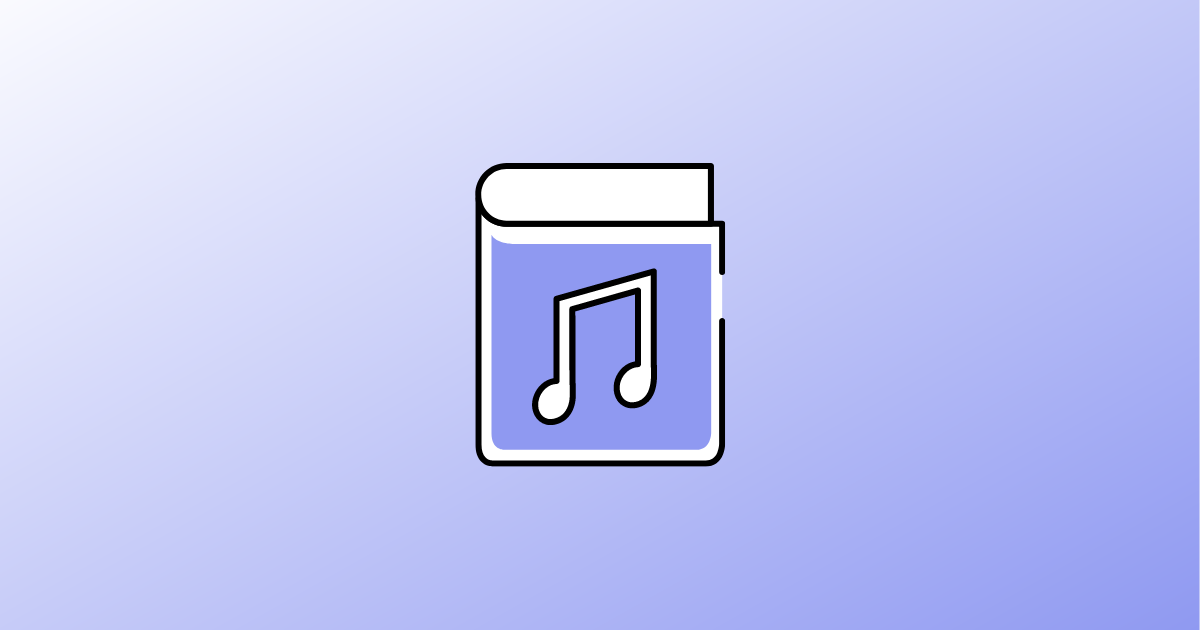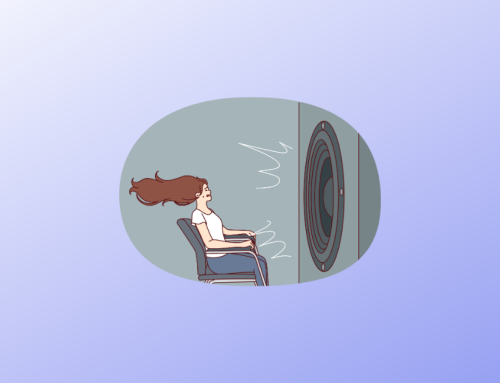So, you’re getting deeper into the music industry, trying to wrap your head around what music publishing means. It’s a critical piece of the puzzle for record label owners like yourself to understand, ensuring your artists get their due recognition and compensation.
Music publishing is essentially about rights management. It’s the business of managing copyrights for musical compositions, ensuring that those who create the music receive payment when their compositions are used. Every time a song is downloaded, streamed, or performed live, there’s potential revenue to be earned, and music publishing makes that possible.
Key Components of Music Publishing:
- Copyright Management: At its core, music publishing revolves around copyright. Copyright laws protect the creators’ work from being used without permission and ensure they’re compensated appropriately.
- Licensing: Publishers also handle licensing agreements for songs. This includes mechanical licenses for album sales and downloads, synchronization licenses for using music in film and TV, and performance licenses for music played in public spaces.
- Royalty Collection: Publishers are responsible for collecting royalties on behalf of the creators. These are essentially the payments made for the rights to use music.
- Standard Publishing Deal: The publisher and songwriter split royalties from the song, usually 50/50. This is a typical arrangement where the publisher manages licensing and copyright protection.
- Co-Publishing Deal: In a co-publishing deal, the songwriter retains a portion of the publishing rights (usually 25%) plus their songwriter’s share.
- Administration Deal: Here, the publisher is only responsible for licensing and royalty collection, not owning any part of the copyright. It’s a good option if you want professional management without giving up rights.
Understanding when to apply these deals depends heavily on what stage the artist is at in their career and their long-term goals. An emerging artist might find an admin deal more appealing, keeping all rights, while established artists might prefer the resources of a full publishing deal.
Getting a grip on music publishing isn’t just about protecting your artists’ work; it’s about actively promoting and profiting from it. As you guide your artists through their careers, consider how different publishing deals can help grow their presence in the industry.
There are Two Types of Music Copyrights: Master vs . Composition
You’ll quickly encounter two critical types of copyrights essential for record label owners to understand: composition and master rights. Getting a grip on these can significantly impact how you manage your artists’ work, ensuring they (and you) get the recognition and compensation they deserve.
Composition Rights
The composition refers to a song’s musical notes and lyrics – the foundational blueprint. The songwriter or the composer typically holds these rights. When we talk about composition rights, we deal with the ability to use, reproduce, and perform the music. This includes:
- Sheet music sales
- Live performance royalties
- Synchronization licenses (for movies, TV shows, commercials)
If your artist writes their own songs, securing their composition rights means they’ll get paid whenever another artist covers the song, played over the radio, or performs live.
Master Rights
On the flip side, master rights are all about the specific recording of a song. Think of it as owning a particular song version, usually held by the record label that financed the recording. These rights allow you to:
- Reproduce and distribute the recorded song
- License it for use in various media (similar to sync rights but specifically for the recording)
This means you’re entitled to royalties when the exact version of the song your artist recorded is played on streaming services, purchased as a download, or used in a commercial.
In practice, these two types of rights often intersect. For instance, if a song is used in a TV show, both the composition (paid to the songwriter/publisher) and the master (paid to the label/artist) rights holders receive compensation. So, understanding and managing both rights effectively is crucial.
Deciding how to handle these rights, whether maintaining ownership, entering into a co-publishing deal or something else, depends on your and your artist’s long-term goals. Each choice presents different opportunities for revenue and exposure.
Music Publishing Royalties: The 3 Types
Here, we’ll break down the three primary types of music publishing royalties: mechanical royalties, public performance royalties, and synchronization license fees. Each plays a unique role in how music generates income, and grasping these concepts is crucial for any record label owner aiming to optimize their earnings and support their artists effectively.
Mechanical Royalties
Mechanical royalties are generated every time a song is physically or digitally reproduced. This includes CD pressings, vinyl manufacturing, and digital downloads or streams. Various factors, including country-specific laws and individual platform agreements, determine these royalties’ rates. For instance, streaming services like Spotify and Apple Music negotiate their mechanical royalty rates, often resulting in variance across platforms.
Understanding mechanical royalties is essential if you’re assisting artists with album distributions or managing online releases. Mechanical rights organizations collect and distribute these royalties, which vary by country (such as the Harry Fox Agency). Registering with these organizations ensures that you collect every cent owed for reproductions of your music.
Public Performance Royalties (PROs)
Public performance royalties come into play anytime music is broadcasted or played in public venues. This includes radio plays, live gigs, background music in stores, bars, and restaurants, and even streaming in public spaces. Such royalties are collected by Performing Rights Organizations (PROs) like ASCAP, BMI, or SESAC in the United States. Each country has its own PROs that manage these rights and distribute earnings to songwriters, composers, and publishers.
Ensuring your music is registered correctly with these organizations as a record label owner can significantly impact your revenue stream. Public performance royalties are a vital income source, especially for artists whose work sees regular airplay or is popular in public venues. Partnering with the right PRO can also provide your artists with networking opportunities and additional visibility.
Synchronization (sync) License Fees
Synchronization, or “sync” for short, involves licensing music for use in visual media like TV shows, movies, commercials, video games, and online content. Sync licensing fees can range widely depending on the usage scope and the media’s reach. For example, a song placed in a global advertising campaign will command a higher fee than one used in a local TV episode.
The negotiation for sync licensing is typically handled on a case-by-case basis, with many factors influencing the final fee. As such, building a solid network within the film and TV industry and understanding the value of your catalog for sync opportunities can be a lucrative facet of your business. Pro-tip: crafting your pitches to highlight how your music aligns with potential visual projects can significantly boost your success in this area.
By delving into the nuances of mechanical royalties, public performance royalties, and synchronization license fees, you’re better equipped to navigate the music publishing world. Remember, the goal isn’t just to create and distribute music and ensure that you and your artists are fairly compensated for every play, stream, and license. Tracking these royalties and understanding their sources are critical steps in achieving long-term success in the music industry.
Music Publishing Roles:
Exploring the music industry can feel like steering a ship through uncharted waters, but understanding the role of music publishers can be your compass. Below, we’ll jump into what makes them crucial to record label owners like yourself.
Publishing Admin: Registration, Collection, and Audit
First, music publishers are pivotal in handling the administrative backbone of songwriting and composition rights. They ensure your artists’ work is appropriately registered with all relevant performance rights organizations (PROs) and mechanical rights organizations. This step is foundational—without it, tracking and collecting royalties becomes a shot in the dark.
- Registration ensures every song is listed correctly with the correct details across all platforms. This includes the songwriters, composers, and publishers involved.
- Collection involves monitoring and gathering all the royalties owed for using your artists’ music. This isn’t just a one-time task; it’s an ongoing process that requires diligence and a keen eye for detail.
- Audit is where publishers show their teeth. They scrutinize the payments received, challenge discrepancies, and ensure every cent owed to your artists finds its way to them. Think of it as quality control for royalties.
Music publishers leverage their relationships and expertise to manage these tasks more efficiently than an individual artist or record label might be able to alone.
Publishing A&R: Scouting for Talent and Developing Songwriters’ Careers
Music publishers aren’t just about the nuts and bolts of administration; they’re also deeply invested in the creative process. Their A&R (Artists and Repertoire) departments work tirelessly to scout fresh talent and nurture the careers of songwriters and composers. This might involve:
- Providing creative feedback and guidance to help refine their work.
- Connecting songwriters with other artists for collaboration opportunities.
- Pitching songs to recording artists, film, TV, and even video game projects.
The goal is to maximize the reach and impact of your artists’ work, helping them grow their brand and, eventually, increase revenue streams.
How to Negotiate Music Rights
Another critical role of music publishers is negotiation. This involves striking deals on copyright, synchronization licenses, and other agreements determining how music can be used and monetized. Music publishers bring their industry knowledge and negotiation skills to the table, ensuring the best possible terms for their artists. They handle:
- Licensing deals for TV, movies, commercials, and video games.
- Arranging co-publishing and sub-publishing agreements.
- Working with PROs to negotiate performance royalties.
Having a publisher with strong negotiation skills is invaluable for a record label owner. They’re your frontline in ensuring your artists’ rights are protected and adequately valued.
Composition Promotion
Finally, promotion is a critical function of music publishers. They work to get your artists’ music heard by as many ears as possible. This can involve:
- Pitching songs to radio stations and playlist curators.
- Securing placements in films, TV shows, and commercials.
- Orchestrating releases and marketing campaigns.
Promotion isn’t just about getting music out there; it’s about getting it to the right audiences. Publishers use their industry connections and insights to effectively target efforts, ensuring the music resonates and maximizes revenue potential.
In essence, music publishers serve as a multifaceted support system for record labels and their artists. They navigate the complex web of copyright and royalties, foster creative growth, secure advantageous deals, and bring music to wider audiences. Partnering with a skilled publisher can empower you to focus on what you do best—producing great music—while they handle the intricacies of the business side.
Breaking Down Music Publishing Deals
These agreements come in various shapes and sizes, each with peculiar features and advantages. Let’s break down the basics to ensure you can make informed decisions for your record label.
Standard Publishing Deals are the bread and butter of the industry. In these arrangements, publishers and songwriters split royalties, usually 50/50. This model is best for artists seeking full support, as publishers cover copyright management, synchronization, and possibly even marketing. It’s a solid choice if you’re aiming to maximize your artists’ exposure while ensuring their works are protected.
Co-Publishing Deals notch things up a bit. Here, the songwriter retains a more significant portion of the publishing rights—often 75%—with the publisher still handling the heavy lifting like copyright management and placement pitches. This type is particularly appealing for artists who want more control over their creations but still need the backing and resources of a publisher.
Print Rights Deals focus on the physical printing of songs, such as in songbooks or sheet music. This niche contract can unlock another revenue stream, especially for songs with potential in educational settings or with instrument learners.
Administration Deals are for those who want to keep their hands firmly on the steering wheel. In this scenario, the songwriter retains all the publishing rights, and the publisher is essentially hired to administer those rights. The publisher’s share typically ranges from 10% to 20%. This deal is ideal for artists or label owners with a strong understanding of publishing but needs support in specific areas, such as international royalty collection.
Each of these deals offers distinct advantages, and the right choice depends on your goals, your artists’ aspirations, and how much control you wish to maintain. Whether you’re leaning towards a full-service arrangement with a standard deal or seeking the autonomy provided by an administration deal, it’s critical to negotiate terms that align with your vision and ensure the longevity of your artists’ careers.
Writer’s Share vs. Publisher’s Share
Understanding the difference between writer’s and publisher’s share is crucial for anyone exploring music publishing. As a record label owner, you’re likely to deal with both shares and knowing how they’re split can significantly influence your business decisions and the advice you offer to your artists.
What’s the Difference?
At its core, music royalties are typically split into two main parts: the writer’s share and the publisher’s share. This split directly impacts the revenue stream from the songs you manage.
- Writer’s share refers to the portion of royalties earned that goes directly to the songwriter or composer of the piece. It’s considered their personal income for creating the work.
- On the other hand, the publisher’s share is the portion of royalties allocated to the music publisher or, in some cases, the record label that publishes the music. This share compensates for the efforts in marketing, distributing, and licensing the work.
How Are They Split?
Traditionally, the split between writer’s and publisher’s share is 50/50. But, this can vary based on the specific agreement between the songwriter and the publisher.
- In Standard Publishing Deals, the 50/50 split remains the norm.
- Co-publishing deals might offer a different ratio, providing songwriters with a more significant percentage of the publisher’s share due to their additional responsibilities or investments in the publishing process.
- Administration Deals see songwriters retaining a more significant portion of or even all their rights, affecting the share split accordingly.
Knowing When to Apply Different Splits
Choosing the right split depends on several factors, including the songwriter’s goals, the level of involvement they wish the publisher to have, and the potential reach of their music. For instance, a songwriter who desires extensive international promotion may be more inclined to agree to a standard split, relying on the publisher’s resources. On the other hand, an established songwriter with a broad network might opt for an administration deal, keeping a more significant share for themselves.
Understanding these nuances allows you to guide your artists through the complexities of publishing deals, ensuring they make decisions that align with their long-term goals and artistic vision.
Summing up Music Publishing
Exploring the music publishing world can seem daunting, but armed with the proper knowledge, you’re well on your way to making informed decisions that best serve your artistic and financial goals. Remember, the distinction between writer’s and publisher’s share is not just about percentages—it’s about partnership. Each deal type offers its benefits and considerations. Whether you’re leaning towards a traditional split or exploring other arrangements, your understanding of these splits is a powerful tool in negotiations. It’s your music and your future. Choose the path that aligns with your vision and trust that your creative works will find their audience with the right approach. Let this guide be your compass in the complex yet rewarding journey of music publishing.
Music publishing is all about collecting the royalties earned from the music you write. When you write a song, and it’s used commercially, you’re owed royalties.





